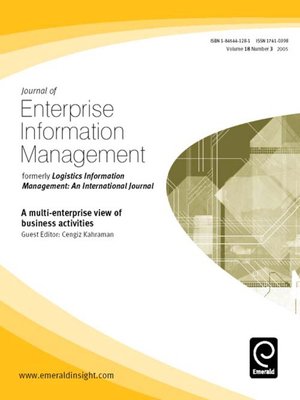Journal of Enterprise Information Management, Volume 18, Issue 3
ebook ∣ Journal of Enterprise Information Management
By Cengiz Kahraman

Sign up to save your library
With an OverDrive account, you can save your favorite libraries for at-a-glance information about availability. Find out more about OverDrive accounts.
Find this title in Libby, the library reading app by OverDrive.



Search for a digital library with this title
Title found at these libraries:
| Library Name | Distance |
|---|---|
| Loading... |
This e-book looks at many business activities, with a multi-enterprise view. The examples of this include: Information technology is an important component of effective supply chain management. For many firms, selection of true IT provides a competitive advantage. It is a multi-attribute selection problem since IT solution requires changes in organizational structure, employee job descriptions and behavior.
Managing human resources is a challenge all business professionals face. Human resource management is a staff function whose primary role is to help the organization achieve its goals. Unlike other resources, human being seeks motivation, satisfaction, and security and need an appropriate climate and culture to achieve high performance.
Outsourcing is a flexible management tool of the individual enterprise. It is a self-reinforcing process as the existence of excellent services creates the change for further outsourcing. The causes of outsourcing processes can be counted as market pressure and supply of excellent services.
Supplier selection is a multi-attribute decision-making problem. The nature of this decision usually is complex and unstructured. The objective is to identify suppliers with the highest potential for meeting a firm’s needs consistently and an acceptable cost.
Overall business performance achieved when there exists an effective coordination between the functions can be well above the performance achieved when the tasks are performed individually.
Justification of technological choices and options in the context of nuclear energy policy. The featured paper shows the link between the way a certain (energy) policy problem is defined, and the way the framework for political decision making is set up in response to the problem







